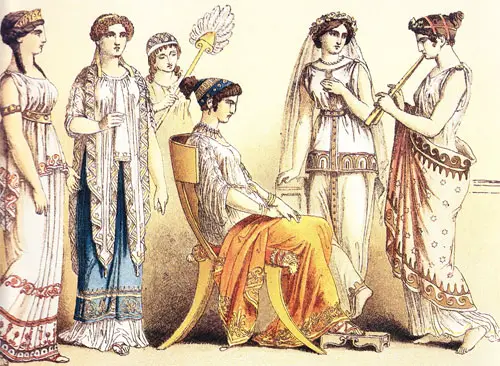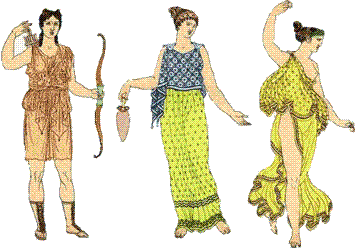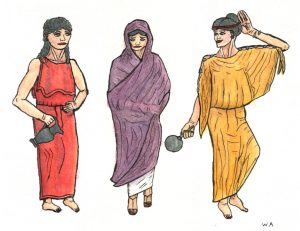Ancient Greek Women Clothing: History has no proofs as to the kind of clothing which was worn by the ancient Greek women. However, it is only by means of artistic descriptions and contemporary accounts so available to us that we can trace out the kind of clothing which was worn by the ancient Greek women.
Ancient Greek Women Clothing
The kind of Ancient Greek Women Clothing which was worn by the ancient Greek women evolved through time. This change in the dressing pattern of a Greek woman changed as per the changing norms of the Greek society which is true in most of the other societies as well.
Greek Peplos
Though the dressing style changed from one period to another, yet there were certain things which remained more or less constant like inner tunics which were also called as peplos or chiton, an outer cloak called as himation, brooches or pine which were used to tie up the garments were called as fibulae and a belt around the waist came to be called a zone.

A Strophion was an undergarment worn by females around the mid-portion of the body and a shawl or stole called as epiblema was used for draping over the tunic. Some of the landmark costumes or outfits were worn by ancient Greek women were Himation which was made from a rectangle of woven wool. Initially, it was worn mainly for outdoor gatherings but when it came to be produced in a lighter material, it was worn anywhere.

Also, in the beginning, it was worn as a cloak. However, in the next few centuries, animations came to be elaborately worked upon and had become ten to twelve feet long.Pedalos was another such garment which was widely worn by the ancient Greek women especially in the 5th century BC.
This Pedalos was made up of woolen material and differed in length depending upon the height of the woman who was going to wear it with the width being constant of 3 meters. There were some common patterns of pedalos like wavy lines, checks, stripped and floral designs.

Pedals
The pedals were like a tube as far as its shape was concerned with the upper edge turned down at the waist and put over the head with a proper fitting at the shoulders. This proper fitting was done with the help of fasteners. Arms were left bare.
At the waist, it was held up by way of a girdle. Such pedalos were open from the right side. These pedals over the period of time underwent changes like the shawl or plaid became so wide that it reached up to the hips of a woman and was tied with tapes on both shoulders.
Ancient Greek Chiton
Chitons, again, were a very popular form of clothing which came into vogue in the early part of the 5th century especially after the Persian invasion. Chitons were usually made up of fine pleated linen.The Doric Chiton was heavily inspired by Pedalos.
This Doris Chiton was of double width from elbow to elbow with bent arms and lifts to a horizontal position. However, unlike the pedalos, the Doric chiton could be open as well as closed on the right side as was worn in Corinth and Attica.

Colors acquired a prime place in an ancient Greek woman’s wardrobe. Different colors were used to symbolize different things. However, the commonly used colors were grey, green and violet. As time passed by and different styles developed, bright hues became popular.